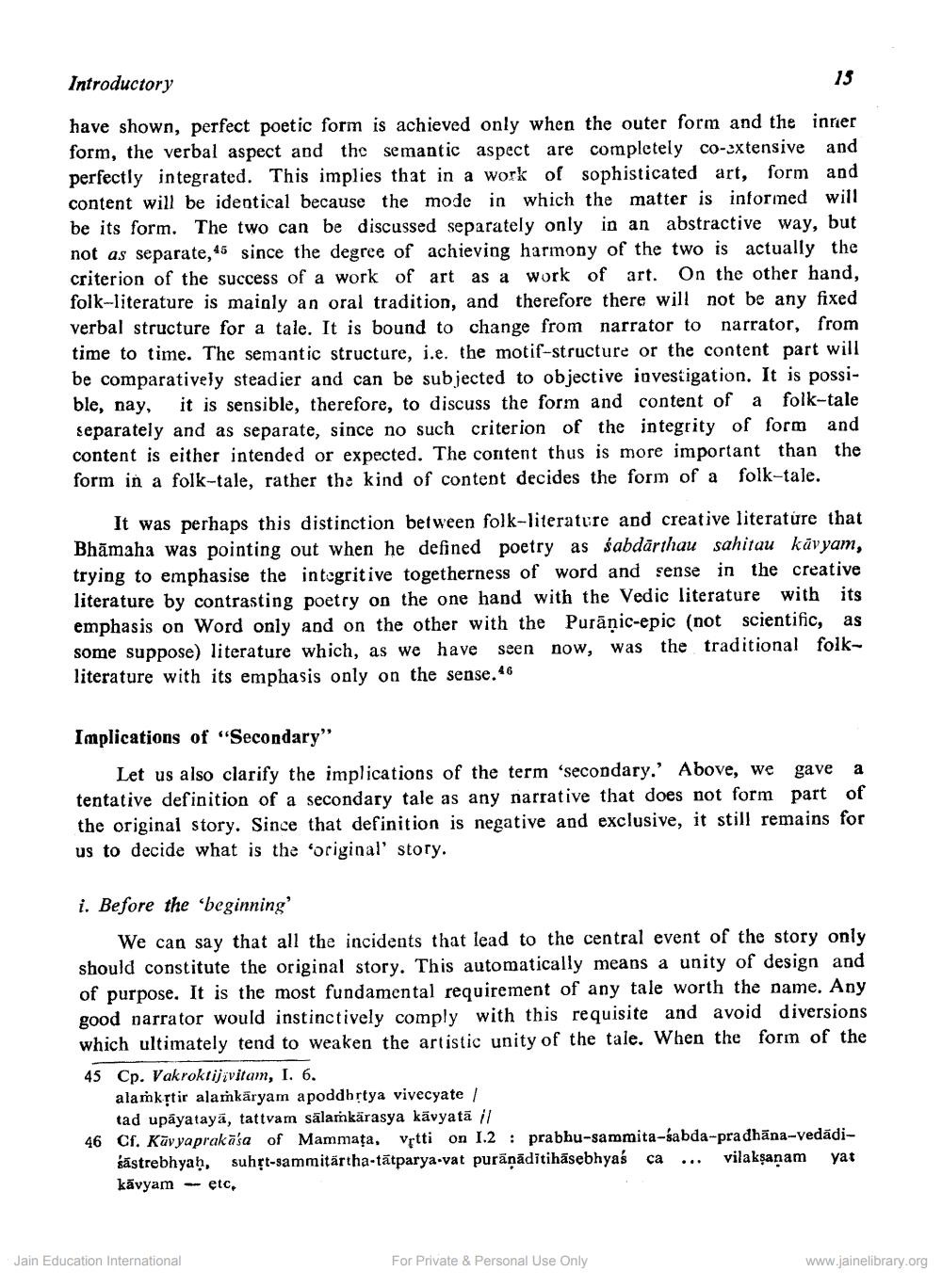________________
Introductory
15
have shown, perfect poetic form is achieved only when the outer form and the inner form, the verbal aspect and the semantic aspect are completely co-extensive and perfectly integrated. This implies that in a work of sophisticated art, form and content will be identical because the mode in which the matter is informed will be its form. The two can be discussed separately only in an abstractive way, but not as separate, 46 since the degree of achieving harmony of the two is actually the criterion of the success of a work of art as a work of art. On the other hand, folk-literature is mainly an oral tradition, and therefore there will not be any fixed verbal structure for a tale. It is bound to change from narrator to narrator, from time to time. The semantic structure, i.e. the motif-structure or the content part will be comparatively steadier and can be subjected to objective investigation. It is possible, nay, it is sensible, therefore, to discuss the form and content of a folk-tale separately and as separate, since no such criterion of the integrity of form and content is either intended or expected. The content thus is more important than the form in a folk-tale, rather the kind of content decides the form of a folk-tale.
It was perhaps this distinction between folk-literature and creative literature that Bhāmaha was pointing out when he defined poetry as sabdārthau sahitau kūvyam, trying to emphasise the integritive togetherness of word and sense in the creative literature by contrasting poetry on the one hand with the Vedic literature with its emphasis on Word only and on the other with the Purāņic-epic (not scientific, as some suppose) literature which, as we have seen now, was the traditional folkliterature with its emphasis only on the sense.46
Implications of "Secondary"
Let us also clarify the implications of the term 'secondary.' Above, we gave a tentative definition of a secondary tale as any narrative that does not form part of the original story. Since that definition is negative and exclusive, it still remains for us to decide what is the original' story.
i. Before the beginning'
We can say that all the incidents that lead to the central event of the story only should constitute the original story. This automatically means a unity of design and of purpose. It is the most fundamental requirement of any tale worth the name. Any good narrator would instinctively comply with this requisite and avoid diversions which ultimately tend to weaken the artistic unity of the tale. When the form of the 45 Cp. Vakroktijavitam, I. 6.
alaṁkstir alamkāryam apoddhrtya vivecyate /
tad upāyatayā, tattvam sālamkärasya kävyatā il 46 Cf. Kūvyaprakā'sa of Mammața, Vrtti on 1.2 : prabhu-sammita-sabda-pradhāna-Vedadi
śástrebhyaḥ, suhţt-sammitärtha-tātparya-vat purāņādītihāsebhyas ca ... vilaksanam yat kávyam -- etc,
Jain Education International
For Private & Personal Use Only
www.jainelibrary.org




